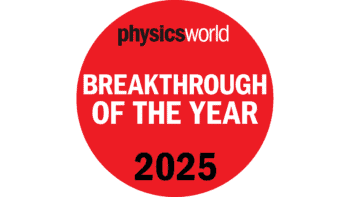The way in which new materials are designed is changing, with data becoming ever more important in the discovery and design process. Designing soft materials is a particularly tricky task that requires selection of different “building blocks” (monomers in polymeric materials, for example) and optimization of their arrangement in molecular space.
Soft materials also exhibit many complex behaviours that need to be balanced, and their molecular and structural complexities make it difficult for computational methods to help in the design process – often requiring costly trial and error experimental approaches instead. Now, researchers at Hokkaido University in Japan have combined artificial intelligence (AI) with data mining methods to develop an ultra-sticky hydrogel material suitable for very wet environments – a difficult design challenge because the properties that make materials soft don’t usually promote adhesion. They report their findings in Nature.
Challenges of designing sticky hydrogels
Hydrogels are a permeable soft material composed of interlinked polymer networks with water held within the network. Hydrogels are highly versatile, with properties controlled by altering the chemical makeup and structure of the material.
Designing hydrogels computationally to perform a specific function is difficult, however, because the polymers used to build the hydrogel network can contain a plethora of chemical functional groups, complicating the discovery of suitable polymers and the structural makeup of the hydrogel. The properties of hydrogels are also influenced by factors including the molecular arrangement and intermolecular interactions between molecules (such as van der Waals forces and hydrogen bonds). There are further challenges for adhesive hydrogels in wet environments, as hydrogels will swell in the presence of water, which needs to be factored into the material design.
Data driven methods provide breakthrough
To develop a hydrogel with a strong and lasting underwater adhesion, the researchers mined data from the National Center for Biotechnology Information (NCBI) Protein database. This database contains the amino acid sequences responsible for adhesion in underwater biological systems – such as those found in bacteria, viruses, archaea and eukaryotes. The protein sequences were synthetically mimicked and adapted for the polymer strands in hydrogels.
“We were inspired by nature’s adhesive proteins, but we wanted to go beyond mimicking a few examples. By mining the entire protein database, we aimed to systematically explore new design rules and see how far AI could push the boundaries of underwater adhesion,” says co-lead author Hailong Fan.
The researchers used information from the database to initially design and synthesize 180 bioinspired hydrogels, each with a unique polymer network and all of which showed adhesive properties beyond other hydrogels. To improve them further, the team employed machine learning to create hydrogels demonstrating the strongest underwater adhesive properties to date, with instant and repeatable adhesive strengths exceeding 1 MPa – an order-of-magnitude improvement over previous underwater adhesives. In addition, the AI-designed hydrogels were found to be functional across many different surfaces in both fresh and saline water.
“The key achievement is not just creating a record-breaking underwater adhesive hydrogel but demonstrating a new pathway – moving from biomimetic experience to data-driven, AI-guided material design,” says Fan.
A versatile adhesive
The researchers took the three best performing hydrogels and tested them in different wet environments to show that they could maintain their adhesive properties for long time periods. One hydrogel was used to stick a rubber duck to a rock by the sea, which remained in place despite continuous wave impacts over many tide cycles. A second hydrogel was used to patch up a 20 mm hole on a pipe filled with water and instantly stopped a high-pressure leak. This hydrogel remained in place for five months without issue. The third hydrogel was placed under the skin of mice to demonstrate biocompatibility.

A sticky wonderland
The super strong adhesive properties in wet environments could have far ranging applications, from biomedical engineering (prosthetic coatings or wearable biosensors) to deep-sea exploration and marine farming. The researchers also note that this data-driven approach could be adapted for designing other functional soft materials.
When asked about what’s next for this research, Fan says that “our next step is to study the molecular mechanisms behind these adhesives in more depth, and to expand this data-driven design strategy to other soft materials, such as self-healing and biomedical hydrogels”.



